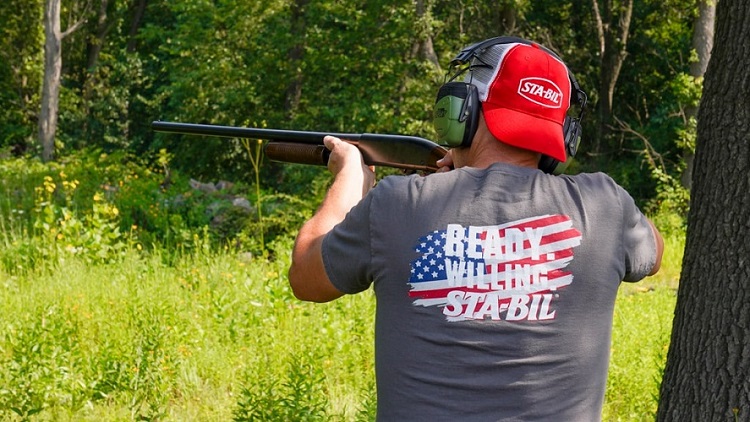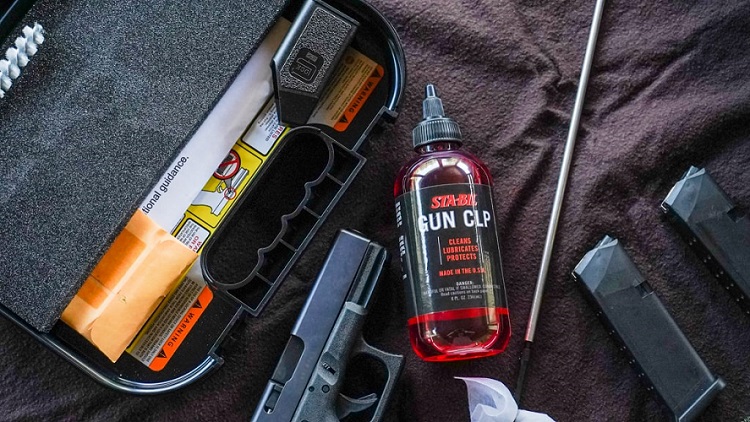Essential Gun Care Maintenance & Tips
Some products you buy come with a lifestyle change, and firearms are at the top of the list. In the United States, owning a firearm is a right, guaranteed by the second amendment. However, there is an element of responsibility, and like with any other dangerous tool, injury or death can occur if not used properly.
Owning a gun comes with newfound responsibilities that require education, training, and regular maintenance. Taking these preceding points seriously is vital to ensure your safety and those around you whenever you have a firearm close by. Gun-related accidents are avoided every day when individual accountability is practiced, and brushing up on essential firearm maintenance is one small example of this.
Read on to learn fundamental gun care maintenance and tips that will put you in a prime position to make you an educated and liable firearm owner.

Disassembling Your Gun
Along with safe gun handling and training in the use of the firearm, one of the key points of gun ownership is maintenance and cleaning. Both serve as pillars at the foundation of responsible gun ownership. When you need your gun, you want it to function properly, so it’s vital to spend more time understanding the anatomy of your firearm, and its required upkeep, because each one is unique. For example, you can take apart a Beretta 92 semi-automatic pistol in a few basic steps. On the other hand, a Ruger Mark III will require more time and attention to detail.
Knowing what each and every part does and where it goes is an invaluable asset, allowing you to figure out where an issue with a firearm may occur and how it can be addressed. Most guns can be taken apart with few to no tools, making disassembly relatively simple when you spend time studying your specific model. If this is your first time owning a gun, it’s in your best interest to start with something that requires basic disassembly. Let’s walk before we run, as they say.
Most models can be easily field stripped without the need for any tools. This is as far as most gun owners will need to go to effectively clean and maintain their firearm(s). If you are not experienced and there is an issue that requires you to go beyond field stripping, what is known as a detail strip, you may want to bring your gun to a local gun store to get it serviced by a professional gunsmith.
However, if you want to learn these methods to do the work yourself, you may need to buy specific gunsmithing tools to get the job done. According to Shooting Times, if you want to take your gun disassembly one step beyond field stripping, you will need tools like an alignment pin and a slave pin. Once you have what you need to disassemble your firearm, the next step is keeping it clean and lubricated.

Cleaning & Maintaining Your Firearm
Being a gun owner in the modern world is way more convenient than it was when the first recorded use of a firearm was documented in 1364. For example, gunpowder is still widely used as the basis to fire projectiles from a gun, but advancements in technology have made the substance so much more effective. We all have the image in our minds from the colonial period of soldiers firing muskets at one another. The smoke was so dense that it would fill the air to the point where you couldn’t see. As you can imagine, gunpowder would stick to those guns like glue, making it difficult to keep clean.
While modern firearms still produce gunpowder residue, the materials they are made with typically hold up to corrosion better than firearms of the past. For example, your Springfield XD is going to be a breeze to clean when you compare it to Benjamin Martin’s musket. Nonetheless, every firearm you can purchase today should be cleaned after each time you take it out to the range or go on a hunt. Essentially, you should do a proper cleaning after you fire it each time. If that sounds like a lot, the invention of multipurpose maintenance products can make the job feel effortless.
The most obvious example for one of these products is a gun cleaner, lubricator, and protectant, otherwise known as CLPs. This type of solution has perfected the art of satisfying each one of a firearm’s most fundamental needs. With your gun unloaded and disassembled, dispense a small drop of the product onto the manufacturer-recommended locations. From there, all you have to do is rub the solution in and wipe away any excess byproducts with a lint-free cloth. Work this best practice into your routine to clear out residue from the chamber and ensure your gun remains ready to fire on all cylinders.
Storing Your Gun Responsibly
Our third and final essential gun maintenance tip revolves around where you choose to keep your firearm(s). Always select a secure location where children or house guests will not be able to locate them quickly. In order to best protect your gun, this location should be free from dust and moisture, both of which can compromise the integrity of your firearm if gone unchecked for too long. It’s highly recommended to invest in a gun safe because this will protect your hardware from contaminants while keeping them out of the wrong hands.
With all these points being said, your gun care routine will take some time and education. Be patient with how you progress and pay attention to how your firearm operates the first time you take it to the range after applying a cleaner and lubricant. Proper cleaning and maintenance should result in minimal malfunctions, which should be motivation enough to take care of your guns. You spent a decent amount of money on your hardware, and keeping them in great shape has never been this painless.






